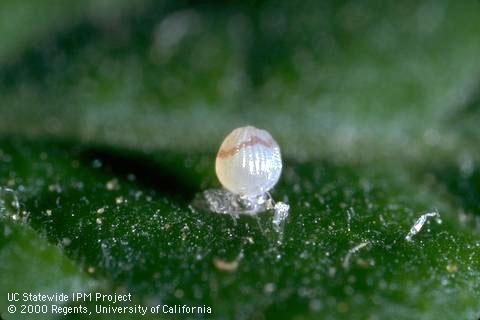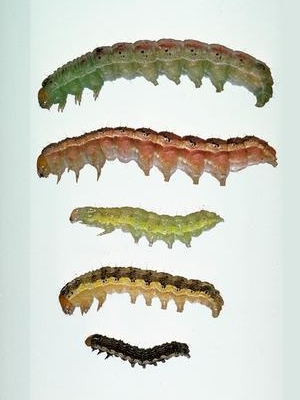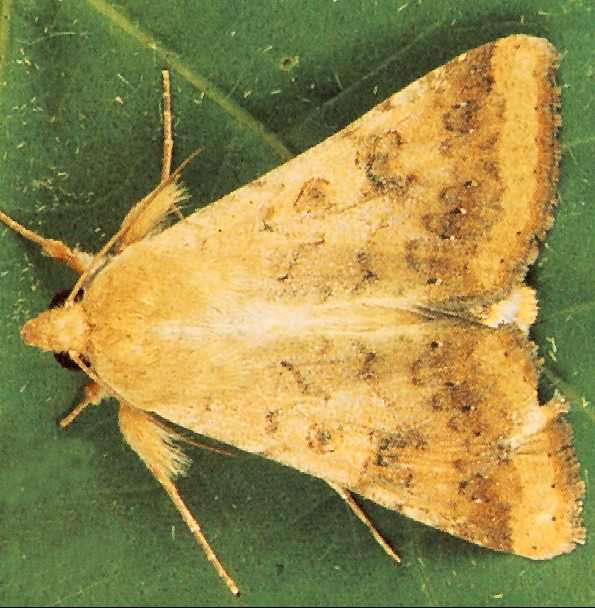


Corn Earworm, Heliothis zea (Boddie)
(Also known as cotton bollworm and tomato fruitworm)
PLANTS ATTACKED: General feeder; corn, grain sorghum and legumes.
DESCRIPTION: Adult. The moth varies in color but generally the front wings are a light grayish-brown, marked with dark-gray to olive-green irregular lines and each has a dark area near the tip. The hind wings are light with more or less wavy dark bands, especially near the extremities. The moths have a wing expanse of about 1 1/2 inches.
Larva. Eggs are flattened spheres laid individually; they are prominently ribbed, 1 /16 inch in diameter, white when first laid but soon turning dark. Newly hatched larvae are white and grow rapidly. As they grow the general color of this worm varies from light green or pink to brown or nearly black. Alternating longitudinal dark and light stripes mark its body but the colors are so variable that such characters are not dependable for identification purposes. The presence of short microspines (visible through a hand lens) on the skin, of abdominal segments, and its feeding habit are very useful characteristics for separating these from similar worms.
LIFE HISTORY: The corn earworm spends the winter as a pupa 2 to 6 inches below the soil surface. It emerges as a moth during the spring and early summer and soon deposits its eggs. Freshly laid eggs are waxy white but soon change to yellow. They are about half the size of a pin head, and are hemispherical with ridges along their sides. A female oviposits 500 to 3,000 eggs, singly on foliage and fruits of many plants. Fresh corn silk is one of the favorite places for egglaying but eggs are commonly deposited in the curl of young corn and grain sorghum plants. Later in the season, grain sorghum heads are preferred. During warm temperatures, eggs hatch in 2 to 4 days, but it may take up to 10 days under cold weather conditions. The worm stage lasts from 2 to 4 weeks. The full-grown larva crawls down the host plant or drops to the ground into which it burrows, forms a walled cell and pupates. The adult or moth emerges 10 to 25 days following pupation. The time required from egg to adult varies from 1 to 2 months depending upon weather conditions. Four to seven generations occur annually in the southern states.
DAMAGE: The newly hatched larva begins feeding almost immediately on that part of the plant upon which the eggs were laid. On corn silk, the worm makes its way to the developing grains which they consume. Here the larva frequently is referred to as the "roasting earworm." It also feeds in the whorls of young grain sorghum and corn plants but usually is not considered of economic importance. The worms cause considerable damage to grain sorghum heads, but they are cannibalistic and usually only one larva will reach the full-grown stage in each head as well as in each "roasting ear" of corn.
BIOLOGY: Females are active in the evening and live about 12 days. Eggs hatch in 3 to 5 days. Pupation occurs in the soil, and the pupa is the overwintering stage. A generation usually requires about a month to complete. Corn earworms are cannibalistic, which usually reduces the number of larvae found per head.